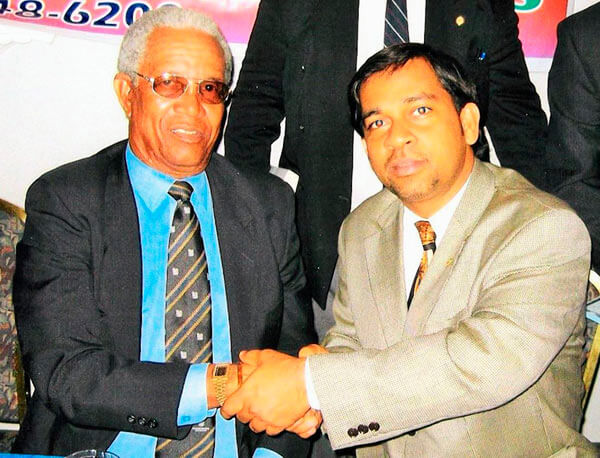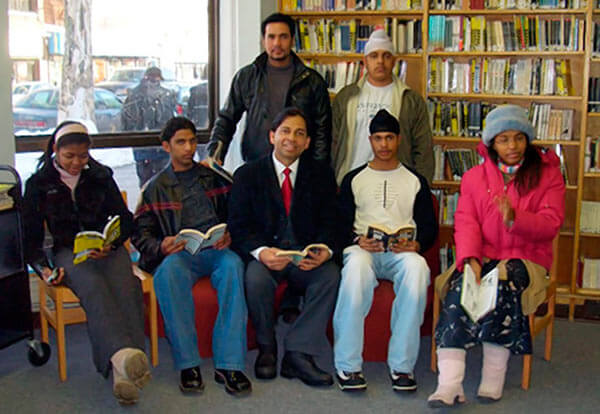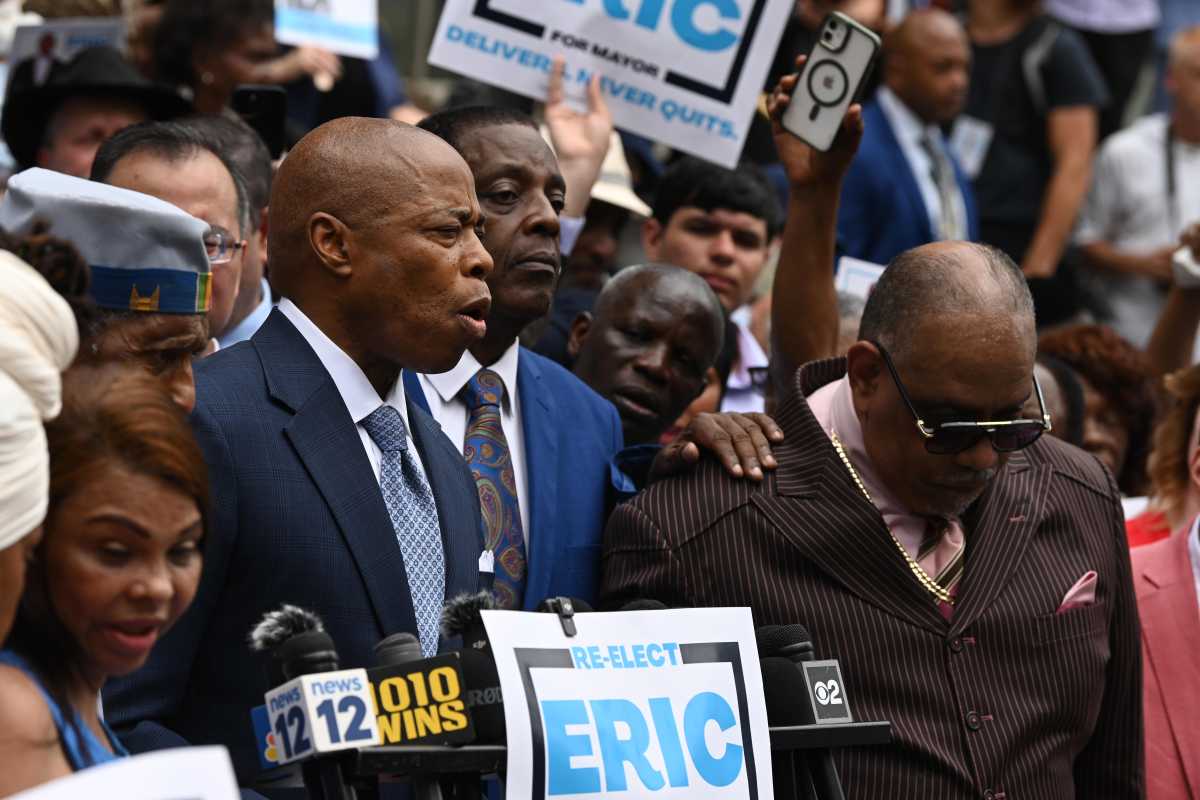To understand what cricket supremacy means in a global context to the average Caribbean man, is best summarized by the former Prime Minister of Jamaica, Michael Manley, “The West Indies are Third World countries, but we belong and are in the first World of Cricket.” Cricket is not only a religion in the Caribbean, but it best defines the region in any context. Regional political integration has followed cricket as a unifying and defining force.
In a deeper psychological and historical context, a West Indian cricketer’s artistry and flamboyance is the product of the post-colonial era, where the psyche is the celebration and liberation from that bondage. His glorious successes lifted a marginalized people from their daily burdens, and took them to flights of pride over their achievements, living in the ecstatic comfort of the superlatives that always followed-helping them overcome their daily burdens.
Cricket is simply the lifeblood of the Caribbean, and its greatest adhesive force. C.L.R. James, the renowned cricket scholar, in his work “Cricket in West Indian Culture,” at, p 119 aptly noted, “From its beginning to this day cricket in the West Indies has expressed with astonishing fidelity the social relations of the islands.” In his seminal work, “Beyond a Boundary,” James puts cricket in perspective when he wrote, “Cricket is first and foremost a dramatic spectacle. It belongs with the theatre, ballet, opera and the dance.”
As kids, we were inspired to become famous and reach the pinnacle of cricketing fame like Sir Garfield Sobers, Sir Learie Constantine, George Headley, Sir Frank Worrell, Rohan Kanhai and other West Indian icons so revered around the cricketing world. They are the very embodiment of the West Indian dream, and the fruit of its labor. One of the great lessons we learnt as aspiring cricketers was to walk when you knew you were out without waiting for the umpire’s signal and to acknowledge a good performance from the opposing side.
In fact, sportsmanship was as intrinsic a part of a cricketer’s development as his ability to flick the ball off the legs, late cut or hook a bouncer off the eyebrows. The latter was a necessity in those days because our paraphernalia consisted only of a sculptured coconut tree branch or carved piece of wood for a bat and a cork ball for a ball, much in the traditions of the great West Indian players listed above. There were no helmets or pads, you had to play off the legs or get crippled.
As Samuel Selvon chronicles in his book, “The Cricket Match,” Ways of Sunlight, p. 162, a dry mango seed often substituted for a ball, and a pitch oil tin for a wicket. Yet, what cricket meant for us as kids is best summarized by Nobel Laureate Sir V. S. Naipaul, in The Middle Passage, p. 44, “Cricket has always been more than a game in Trinidad. In a society which demanded no skills and offered no rewards to merit, cricket was the only activity which permitted a man to grow to his full stature and to be measured against international standards… The cricketer was our only hero-figure.”
This question as to who is the greatest cricketer has spurred great debate when Wisden’s so-called panel of experts chose Sir Don Bradman over Sir Garry Sobers as the cricketer of the last century, and, a fortiori, the greatest cricketer. Hopefully, this article will put the issue to rest. Sir Garfield Sobers was the greatest cricketer, as distinct from being the greatest batsman, which honor belongs to Bradman and others. Sobers was the greatest cricketer of this and any other century, and by parity of reasoning, that he was the greatest cricketer that has ever lived, or the greatest the world has ever seen.
The son of a merchant seaman from the small island of Barbados, he was only five when his father died at sea in January 1942, after his ship was torpedoed by a German U-boat. Sobers’ rise from his ensuing hardship to greatness, to his sobriquet “King Cricket,” is a monumental inspiration for many to follow, and his genius has bequeathed an indelible memory wherever cricket is played. He was born with an extra finger in each hand, which he removed himself, a harbinger that the Good Lord had overflowed that extra talent into him, demonstrated by him playing golf, soccer and basketball for Barbados, and making his first class and Test debuts in cricket at the age of 16 and 17 respectively.
He was a one-man cricket team, the dream of any captain. His versatility with the ball enabled him to bowl left-arm orthodox and wrist spin and fast-medium pace, including bowling bouncers. The completeness of his versatile skills and talents bestrode the cricketing world like a colossus, and like the proverbial Napoleon on the battlefields of cricket, he conquered all before him, excelling in every conceivable department of the game-except wicket keeping. Oh, if only Sir Garry, and players like Kanhai, Hall, Lara, Richards, Headley and others were available to proudly don West Indian flannels… West Indian pride will soar once again.
Uniquely gifted, he was blessed with supreme athleticism, panther reflexes, eagle eyesight and the heart of a lion. He was a peerless exemplar of cricketing brilliance, endowed with an alliance of such natural gifts of talent and genius, that cricket may never see his like again. He was the cricketer’s cricketer, whose phenomenal genius hardly brooked human limits. It was legendary, both in quality and quantity. Sobers has set the standards by which other cricketers are measured, and like Muhammad Ali in boxing, Michael Jordan in basketball and Pele in soccer, Sobers is similarly unrivalled in the world of cricket.
Sir Neville Cardus, that doyen of cricket scribes, gave the appropriate imprimatur to his all round genius in Wisden, 1967, p. 38, when he wrote: “Garfield St. Aubyn Sobers…the most renowned name of any cricketer since Bradman’s high noon. He is, in fact, even more famous than Bradman ever was; for he was accomplished in every department of the game, and has exhibited his genius in all climes and conditions… We can safely agree that no player has proven versatility of skill as convincingly as Sobers has done, effortlessly, and after the manner born.”
In fact, Sobers is to cricket what Shakespeare is to literature, Michelangelo to art and Mozart to music. His only perceivable Achilles heel was as a captain, a consideration which can be excluded in the present context of argument. Sir Donald Bradman, who saw his 254 against Australia for a World XI in Melbourne in 1971-72, reckoned that it was the best innings he had ever seen on Australian soil. Sir Clyde Walcott said, “Sir Gary is remembered not only for his remarkable trail of statistical records, but for the quality of his cricket and the way he enjoyed the game.” E.W. Swanton reminded us that “the true measure of his influence must take account of his sportsmanship and an unselfishness that were never questioned, an example second to none.” John Arlott described Sobers as “the finest all-round player in the history of cricket.”
C.L.R. James reiterated that, “A man of genius is what he is, he cannot be something else and remain a man of genius.” Michael Manley once said this of Sobers, “Sobers was destined, in typically Caribbean fashion, to shine like some great star alone in the firmament of his own genius.” Let Sobers have the last word. In his book, The Changing Face of Cricket, he commends C.L.R. James’ words to all readers everywhere, as if answering those who chose him second best, “What do they know of cricket, who only cricket know?”
Sobers played 93 Tests for the West Indies, scoring 26 centuries and 8,032 runs at an average of 57.78, taking 235 wickets at an average of 34.03, while holding 109 catches, most spectacularly close to the wicket with panther like reflexes. He has the fourth highest batting average in Test cricket in the list of cricketers with more than 5,000 runs. In his 383 first-class matches, he scored over 28,000 runs and took over 1000 wickets. His statistics eschew any comparison.
Note: Albert Baldeo is a civil rights activist and community advocate, and his groundbreaking political efforts placed previously ignored minority communities like Richmond Hill and Ozone Park firmly on the political and economic map. As the president of the Baldeo Foundation and Queens Justice Center, he has continued to fight for equal rights, dignity and inclusion in government and decision making, and in recognizing role models like Sir Garry Sobers. He can be contacted at the Baldeo Foundation: (718) 529-2300.


























